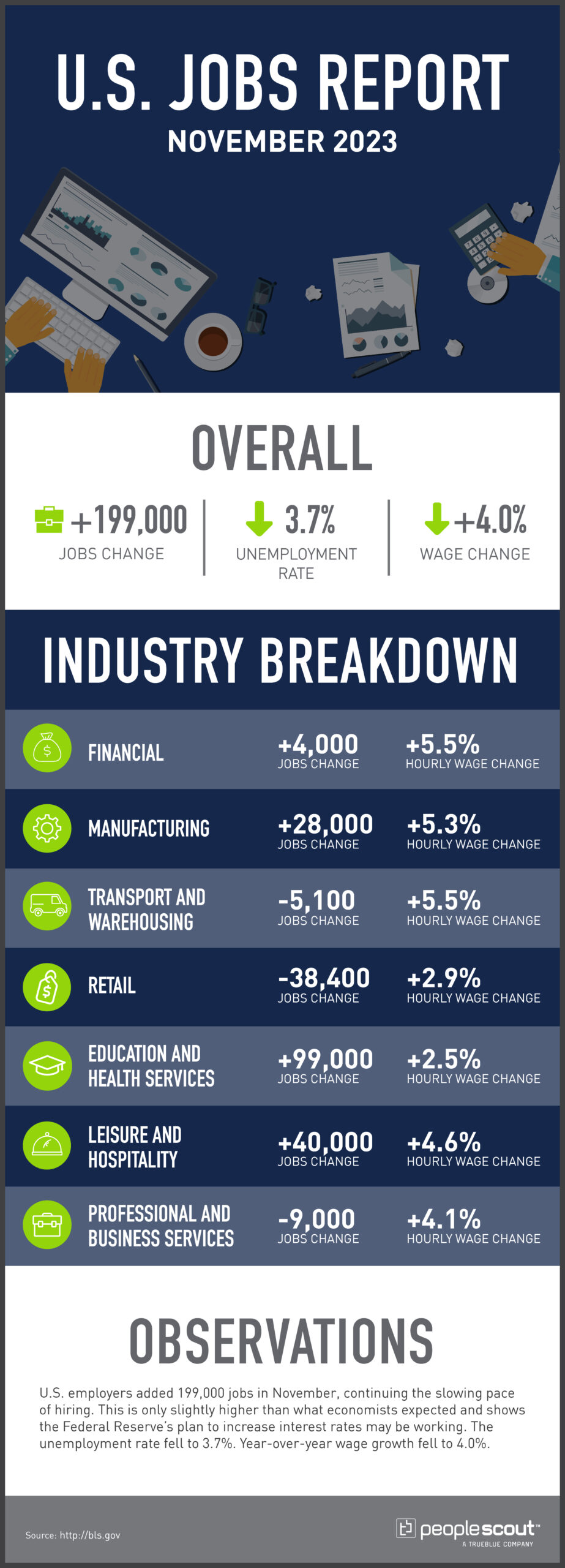U.S. employers added 199,000 jobs in November, continuing the slowing pace of hiring. This is only slightly higher than what economists expected and shows the Federal Reserve’s plan to increase interest rates may be working. The unemployment rate fell to 3.7%. Year-over-year wage growth fell to 4.0%.

The Numbers
199,000: U.S. employers added 199,000 jobs in November.
3.7%: The unemployment rate fell to 3.7%.
4%: Wages rose 4% over the past year.
The Good
Experts at The Wall Street Journal call November’s jobs report “nearly perfect,” and an indication that a soft-landing for the U.S. economy is taking shape. The 199,000 jobs added to the economy represent a sustainable pace of growth that has remained steady throughout the fall months. The unemployment rate also fell to 3.7% after jumping to 3.9% the previous month. This had raised some red flags on Wall Street, but November’s decrease demonstrates that job growth is likely to continue into 2024. Additionally, wage growth continued to soften, dropping to 4%. The Federal Reserve is looking for wage growth to slow to lower inflation.
The Bad
It’s not easy to find bad news in November’s report, but the New York Times points out that the job growth was not evenly spread across industries. The strongest growth was in healthcare and government hiring, which are two of the sectors least connected to the strength of the economy. While manufacturing did see growth in December, much of that can be attributed to workers returning after the auto strikes. Additionally, the retail industry shed more than 38,000 jobs, showing some weakness in holiday hiring.
The Unknown
The big question is what the latest jobs report trends will mean for interest rates. Marketwatch reports that the Federal Reserve is likely to keep rates high into next spring. However, as the board meets next week, analysts expect the pause on increases to continue. Recent jobs reports have indicated that their strategy is working, and they fear raising rates too high or too quickly could trigger a downturn.




